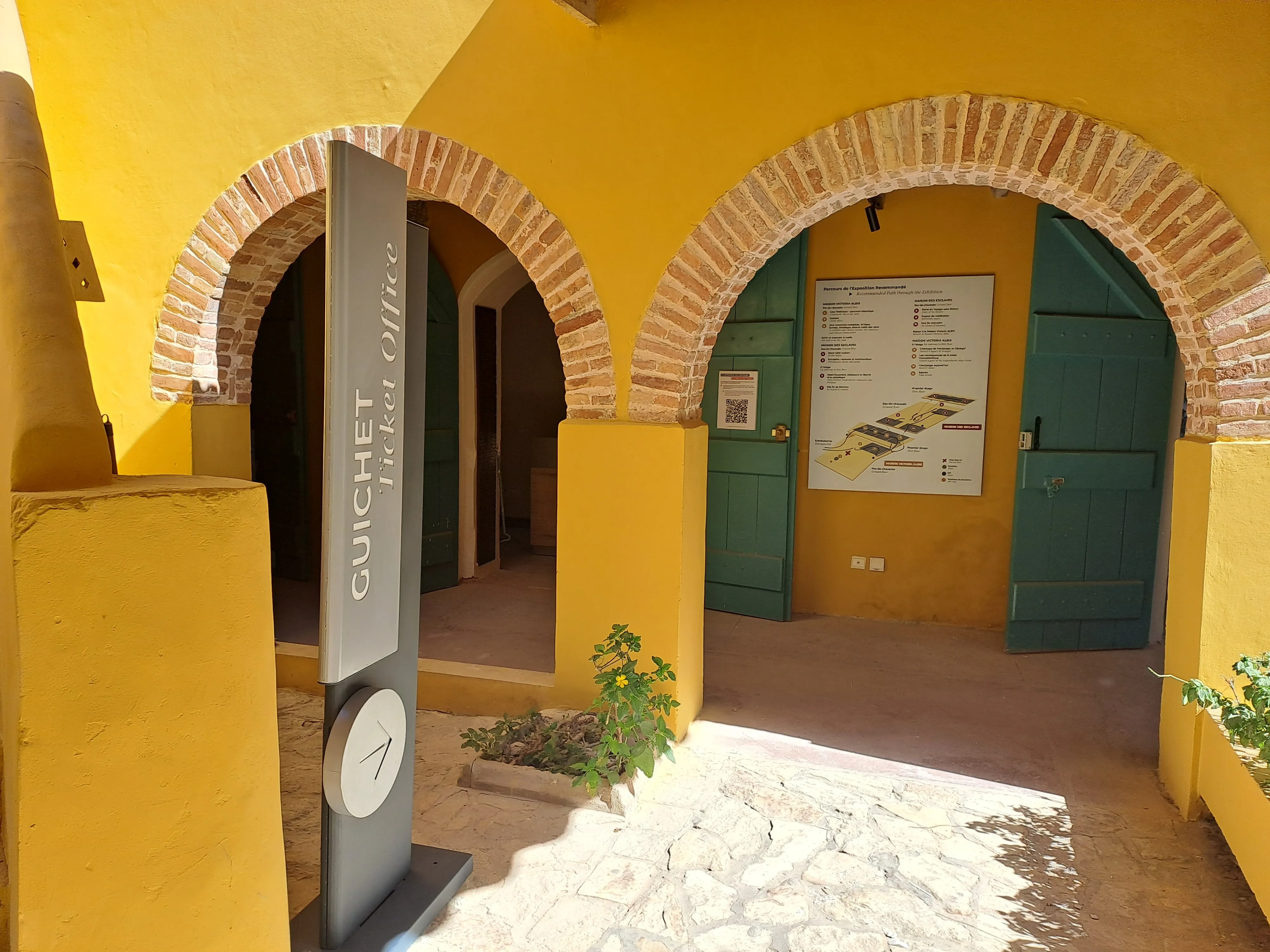Renewing the exhibitions at Senegal’s world-renowned Maison des Esclaves (House of Slaves) museum has been one of the most engrossing challenges Flow has tackled, ever.
The museum lies on Gorée, an island and United Nations Educational, Cultural and Scientific Organisation World Heritage Site just off the coast of Dakar. Between the 15th and 19th centuries, it was the largest slave-trading centre on the African coast, a place of tragedy for millions of people who were torn from their loved ones and thrust into a life of slavery in a strange land.
Working with the International Coalition of Sites of Conscience to assist in designing, producing and building an updated museum exhibition that deals with slavery, especially in a country where slavery has had an enormous social impact, was humbling. Over the nearly 20 years of Flow’s existence, we have worked on many fascinating projects. This one is definitely one of the most affecting.

Homage to a painful history

Maison des Esclaves is no ordinary museum. It is a pilgrimage site for many, a place where visitors, many of them the descendants of African slaves, come to pay homage to those who were forced to become commodities in the slave trade. Respect for this pilgrimage needed to be strongly conveyed throughout the museum.
The International Coalition of Sites of Conscience was established to preserve memory, promote truth and pursue justice in places where human rights abuses have taken place.
It collaborated with the Senegalese government on the Maison des Esclaves project and presented Flow with an approved script for the exhibition. Our task was to bring the narrative to life in an inherently Senegalese way, to design and manufacture all the necessary elements and to build and install them in the two existing buildings earmarked for the exhibition on Gorée.

The exhibition invites visitors to reflect on the lasting impact of the slave trade. It also raises awareness of slavery, which remains a global issue.
To ensure that the exhibition would be distinctly Senegalese, Flow brought in contemporary Senegalese craftsmen, artisans and suppliers. Care also had to be taken with the building, constructed in 1776, as a pivotal part of the Gorée World Heritage Site, and rules about what could and could not be done in the space had to be meticulously observed.
In the past, visits to the museum were guided, but this had since changed, so we had to make sure the exhibition would work, whether guided or not. It needed to be easy for visitors to orientate themselves and find their way through the exhibition.


Researching tragedy
The complex task of meeting all these requirements started with lots of research, including a site visit, which was imperative to get accurate dimensions and fully understand the possibilities and limitations of the two separate buildings that make up the museum.
We also researched Senegalese culture and history to source appropriate inspiration for the visual language we created, and to find appropriate suppliers, craftspeople and artists who could contribute and create accurate 3D digital mock-ups of the buildings to give us an accurate visual backdrop for the exhibition content.

A bespoke slave ship model
One of the most challenging tasks for the museum was to create a replica slave ship in wood. The model pictured below was built in South Africa by a craftsman from KwaZulu-Natal and shipped to Senegal.




While Senegalese artists were commissioned to create artworks for the exhibition, the exhibition cases and graphic panels were created in South Africa.
With all the elements safely delivered to the museum, a team of nine, including two Senegalese workers who were trained during the process, took three weeks to build and install the exhibition across the two buildings. In the final week, Linda Norris from the International Sites of Conscience Coalition and Flowstar Janet Berger travelled to the museum to check the quality of the workmanship, add content, place artworks and make last-minute adjustments.

Work we love; work that makes a difference

At Flow, we like to say that we believe in working with people we like, on work we love, and on work that will make the world a better place. This project is a testament to that philosophy.
Taking more than two years from the original briefing to full completion, renewing the exhibition at Maison des Esclaves was a roller-coaster ride of creativity and opportunity, a pandemic, shipping and customs crises, consultation and compromise, success and reward.
The team who worked on this project felt a massive sense of accomplishment and pride. We sincerely hope that we have produced an exhibition that will touch the hearts of all who wander the rooms of Maison des Esclaves.
We take heart from Norris’s words: “Flow’s work has been exemplary in every way. The team has been creative, attentive to every detail, and patient through Covid and other delays. Their design and fabrication work is of the highest quality, to fully express the potential of the design.”











